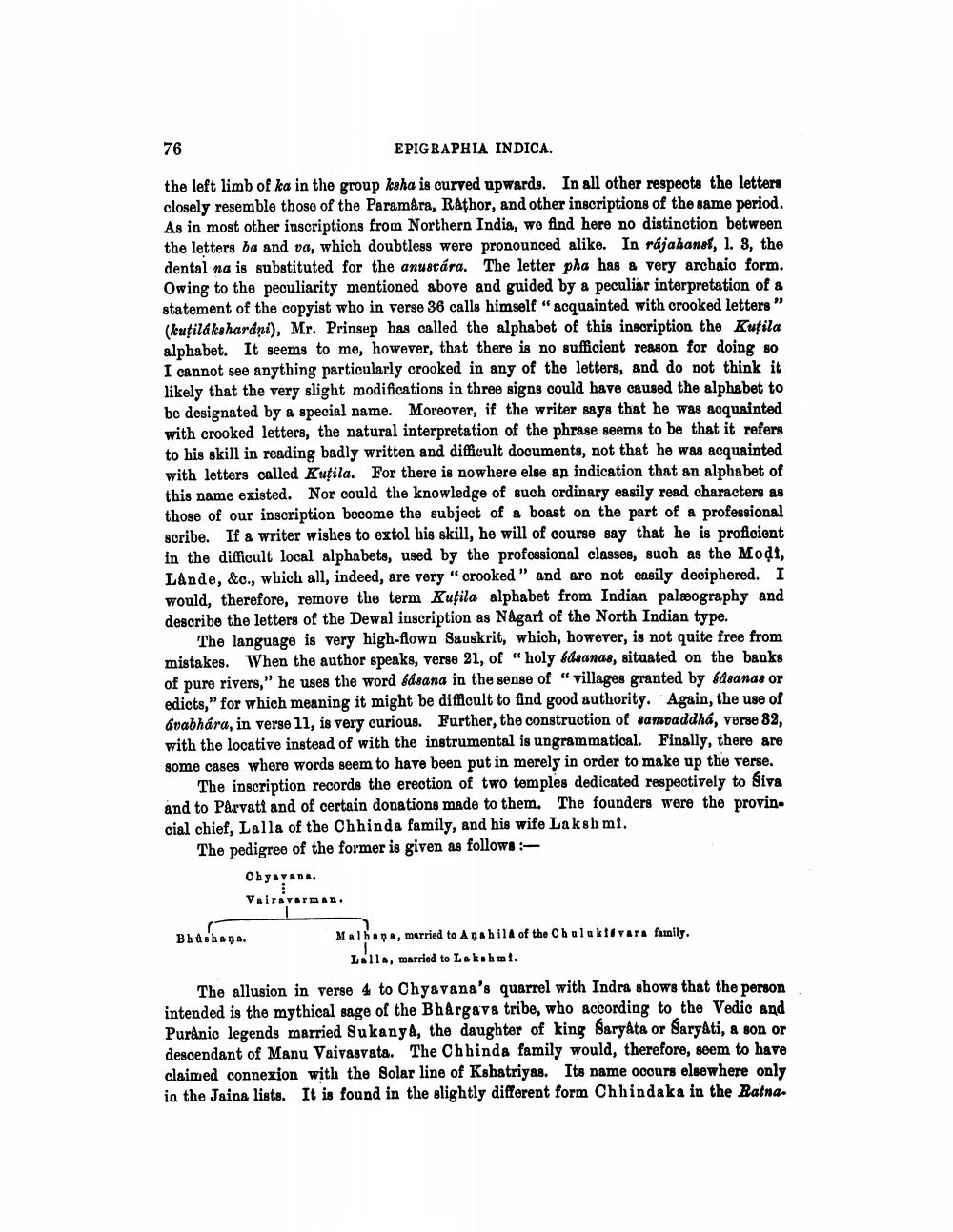________________
76
EPIGRAPHIA INDICA.
the left limb of ka in the group ksha is curved upwards. In all other respects the letters closely resemble those of the Paramara, Rathor, and other inscriptions of the same period. As in most other inscriptions from Northern India, wo find here no distinction between the letters ba and va, which doubtless were pronounced alike. In rájahansi, 1. 3, the dental na is substituted for the anusrára. The letter pha has a very archaic form. Owing to the peculiarity mentioned above and guided by a peculiar interpretation of a statement of the copyist who in verse 36 calls himself "acquainted with crooked letters" (kuţiláksharani), Mr. Prinsep has called the alphabet of this inscription the Kutila alphabet. It seems to me, however, that there is no sufficient reason for doing so I cannot see anything particularly crooked in any of the letters, and do not think it likely that the very slight modifications in three signs could have caused the alphabet to be designated by a special name. Moreover, if the writer says that he was acquainted with crooked letters, the natural interpretation of the phrase seems to be that it refers to his skill in reading badly written and difficult documents, not that he was acquainted with letters called Kutila. For there is nowhere else an indication that an alphabet of this name existed. Nor could the knowledge of such ordinary easily read characters as those of our inscription become the subject of a boast on the part of a professional scribe. If a writer wishes to extol his skill, he will of course say that he is proficient in the difficult local alphabets, used by the professional classes, such as the Modt, Lande, &c., which all, indeed, are very "crooked" and are not easily deciphered. I would, therefore, remove the term Kutila alphabet from Indian palæography and describe the letters of the Dewal inscription as Nagart of the North Indian type.
The language is very high-flown Sanskrit, which, however, is not quite free from mistakes. When the author speaks, verse 21, of "holy édsanas, situated on the banks of pure rivers," he uses the word sásana in the sense of " villages granted by deanas or edicts," for which meaning it might be difficult to find good authority. Again, the use of dvabhára, in verse 11, is very curious. Further, the construction of samvaddhá, verse 82, with the locative instead of with the instrumental is ungrammatical. Finally, there are some cases where words seem to have been put in merely in order to make up the verse.
The inscription records the erection of two temples dedicated respectively to Siva and to Parvati and of certain donations made to them. The founders were the provin. cial chief, Lalla of the Chhinda family, and his wife Lakshmi. The pedigree of the former is given as follows :
Chyarada. Vairavarman
Bhashana.
Malha A, married to Anahild of the Chalukte vara family.
Lilla, married to Lakshmt.
The allusion in verse 4 to Chyavana's quarrel with Indra shows that the person intended is the mythical sage of the Bhargava tribe, who according to the Vedic and Puranic legends married Sukanya, the daughter of king Saryata or Saryati, a son or descendant of Manu Vaivasvata. The Chhinda family would, therefore, seem to have claimed connexion with the Solar line of Kshatriyas. Its name occurs elsewhere only in the Jaina lists. It is found in the slightly different form Chhindaka in the Ratna.




